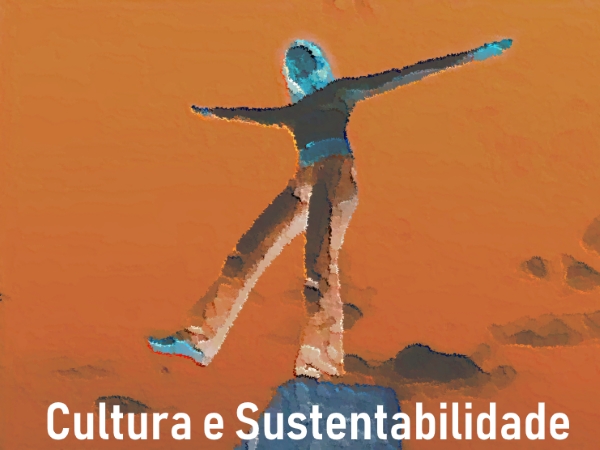Papel de la regulación génica en la acción de enzimas lignocelulolíticas
Palabras clave:
factores de transcripción, etanol 2G, hongos filamentososResumen
El etanol de segunda generación (2G), producido a partir de residuos de biomasa vegetal, como la paja de arroz y el bagazo de caña de azúcar, son alternativas prometedoras para incrementar la contribución de los biocombustibles a la matriz energética global. El uso eficiente de fuentes de carbono alternativas requiere un consorcio enzimático altamente específico, compuesto principalmente por celulasas y hemicelulasas. El alto costo de la hidrólisis enzimática, asociado a un proceso de producción deficiente, hace que el etanol 2G sea económicamente competitivo con las fuentes de energía tradicionales. Los hongos filamentosos se destacan como organismos productores de enzimas lignocelulolíticas, siendo objetivos en la investigación biotecnológica para mejorar cepas capaces de incrementar la producción de enzimas. Una forma de aumentar la producción de complejos enzimáticos es la manipulación de la expresión génica de las enzimas de interés, lo que puede ocurrir a nivel transcripcional. Los factores de transcripción (TF) son elementos que actúan en la represión o activación de genes. En vista de esto, la regulación de los factores de transcripción, en lugar del gen diana, es una estrategia eficiente y prometedora para mejorar los cócteles de enzimas producidos por hongos filamentosos. En este sentido, el propósito de este trabajo fue realizar una revisión didáctica sobre el papel de los factores de transcripción en la regulación génica de enzimas lignocelulolíticas en hongos. La potenciación de la expresión génica y la optimización de la producción enzimática pueden hacer más accesible el proceso de hidrólisis enzimática de la biomasa vegetal, permitiendo una amplificación de la contribución del etanol 2G en el mercado global de biocombustibles.
Citas
PÉREZ, J. et al. Biodegradation and biological treatments of cellulose, hemicellulose, and lignin: an overview. International Microbiology, [s.l.], v. 5, n. 2, p.53-63, 27 abr. 2002. Springer Nature. http://dx.doi.org/10.1007/s10123-002-0062-3.
KOHLHEPP, Gerd. Análise da situação da produção de etanol e biodiesel no Brasil. Estudos Avançados, [s.l.], v. 24, n. 68, p.223-253, 2010. FapUNIFESP (SciELO). http://dx.doi.org/10.1590/s0103-40142010000100017.
TAHERZADEH, Mohammad; KARIMI, Keikhosro. Pretreatment of Lignocellulosic Wastes to Improve Ethanol and Biogas Production: A Review. International Journal of Molecular Sciences, [s.l.], v. 9, n. 9, p.1621-1651, 1 set. 2008. MDPI AG. http://dx.doi.org/10.3390/ijms9091621.
PEREIRA, Sandra et al. 2G ethanol from the whole sugarcane lignocellulosic biomass. Biotechnology for Biofuels, [s.l.], v. 8, n. 1, p.44-0, 2015. Springer Nature. http://dx.doi.org/10.1186/s13068-015-0224-0.
LYND, L. R. et al. Microbial Cellulose Utilization: Fundamentals and Biotechnology. Microbiology and Molecular Biology Reviews, [s.l.], v. 66, n. 3, p.506-577, 1 set. 2002. American Society for Microbiology. http://dx.doi.org/10.1128/mmbr.66.3.506-577.2002.
SILVA, Claudemir Natalino da et al. Second-generation ethanol from pineapple leaf fibers. Journal of Natural Fibers, [s.l.], p.1-9, 2 maio 2018. Informa UK Limited. http://dx.doi.org/10.1080/15440478.2018.1469453.
World Energy Balances 2018. International Energy Agency. Disponível (online) <https://www.iea.org/>.
MOHAN, Lindsey; CHEN, Jing; ANDERSON, Charles W. Developing a multi-year learning progression for carbon cycling in socio-ecological systems. Journal of Research in Science Teaching, [s.l.], v. 46, n. 6, p.675-698, ago. 2009. Wiley. http://dx.doi.org/10.1002/tea.20314
FREIRE, D. M. G.; CASTILHO, L. C. Enzimas em Biotecnologia: Produção, aplicação e mercado. 2008.
FURLAN, Felipe F et al. Bioelectricity versus bioethanol from sugarcane bagasse: is it worth being flexible? Biotechnology for Biofuels, [s.l.], v. 6, n. 1, p.142-0, 2013. Springer Nature. http://dx.doi.org/10.1186/1754-6834-6-142.
MACRELLI, Stefano; GALBE, Mats; WALLBERG, Ola. Effects of production and market factors on ethanol profitability for an integrated first and second generation ethanol plant using the whole sugarcane as feedstock. Biotechnology for Biofuels, [s.l.], v. 7, n. 1, p.26-0, 2014. Springer Nature. http://dx.doi.org/10.1186/1754-6834-7-26.
XAVIER, M. The Brazilian sugarcane ethanol experience. Issue analysis 3, Washington, DC, 2007. Disponível (online) <http://www.cei.org/pdf/5774.pdf>
ABO, Bodjui Olivier et al. Lignocellulosic biomass for bioethanol: an overview on pretreatment, hydrolysis and fermentation processes. Reviews on Environmental Health, [s.l.], v. 34, n. 1, p.57-68, 26 mar. 2019. Walter de Gruyter GmbH. http://dx.doi.org/10.1515/reveh-2018-0054.
GUPTA, Anubhuti; VERMA, Jay Prakash. Sustainable bio-ethanol production from agro-residues: A review. Renewable and Sustainable Energy Reviews, [s.l.], v. 41, p.550-567, jan. 2015. Elsevier BV. http://dx.doi.org/10.1016/j.rser.2014.08.032.
JOUZANI, Gholamreza Salehi; TAHERZADEH, Mohammad J. Advances in consolidated bioprocessing systems for bioethanol and butanol production from biomass: a comprehensive review. Biofuel Research Journal, [s.l.], p.152-195, 1 mar. 2015. Greenwave Publishing of Canada. http://dx.doi.org/10.18331/brj2015.2.1.4.
PÉREZ, J. et al. Biodegradation and biological treatments of cellulose, hemicellulose and lignin: an overview. International Microbiology, [s.l.], v. 5, n. 2, p.53-63, 27 abr. 2002. Springer Nature. http://dx.doi.org/10.1007/s10123-002-0062-3.
VODOVNIK, Maša et al. Valorization of deinking sludge as a substrate for lignocellulolytic enzymes production by Pleurotus ostreatus. Journal of Cleaner Production, [s.l.], v. 197, p.253-263, out. 2018. Elsevier BV. http://dx.doi.org/10.1016/j.jclepro.2018.06.163.
WANG, Mingyu et al. Cellulolytic Enzyme Production and Enzymatic Hydrolysis for Second-Generation Bioethanol Production. Biotechnology in China Iii: Biofuels and Bioenergy, [s.l.], p.1-24, 2012. Springer Berlin Heidelberg. http://dx.doi.org/10.1007/10_2011_131.
CAZY. Carbohydrate Active Enzymes database. 2016. Disponível (online) <http://www.cazy.org/>.
CASTRO, Aline Machado de; PEREIRA JUNIOR, Nei. Produção, propriedades e aplicação de celulases na hidrólise de resíduos agroindustriais. Química Nova, [s.l.], v. 33, n. 1, p.181-188, 2010. FapUNIFESP (SciELO). http://dx.doi.org/10.1590/s0100-40422010000100031.
OGEDA, Thais Lucy; PETRI, Denise F. S. Hidrólise Enzimática de Biomassa. Química Nova, [s.l.], v. 33, n. 7, p.1549-1558, 2010. FapUNIFESP (SciELO). http://dx.doi.org/10.1590/s0100-40422010000700023.
RYTIOJA, Johanna et al. Plant-Polysaccharide-Degrading Enzymes from Basidiomycetes. Microbiology and Molecular Biology Reviews, [s.l.], v. 78, n. 4, p.614-649, 26 nov. 2014. American Society for Microbiology. http://dx.doi.org/10.1128/mmbr.00035-14. [23] ALBERTS, Bruce et al. Biologia molecular da célula, 6th edição. Artmed Editora, 2017.
LAMBERT, Samuel A. et al. The Human Transcription Factors. Cell, [s.l.], v. 172, n. 4, p.650-665, fev. 2018. Elsevier BV. http://dx.doi.org/10.1016/j.cell.2018.01.029.
LEE, Tong ihn; YOUNG, Richard A. Transcriptional Regulation and Its Misregulation in Disease. Cell, [s.l.], v. 152, n. 6, p.1237-1251, mar. 2013. Elsevier BV. http://dx.doi.org/10.1016/j.cell.2013.02.014.
SUKUMARAN, R. K.; SINGHANIA, R. R.; PANDEY, A. Microbial cellulases - Production, applications and challenges. Journal of Scientific & Industrial Research, v. 64, p.832-844, fev. 2005. http://nopr.niscair.res.in/bitstream/123456789/5375/1/JSIR%2064%2811%29%20832-844.pdf
BHATTACHARYA, Ankita Shrivastava; BHATTACHARYA, Abhishek; PLETSCHKE, Brett I. Synergism of fungal and bacterial cellulases and hemicellulases: a novel perspective for enhanced bio-ethanol production. Biotechnology Letters, [s.l.], v. 37, n. 6, p.1117-1129, 6 fev. 2015. Springer Nature. http://dx.doi.org/10.1007/s10529-015-1779-3.
PUNT, Peter J et al. Filamentous fungi as cell factories for heterologous protein production. Trends in Biotechnology, [s.l.], v. 20, n. 5, p.200-206, maio 2002. Elsevier BV. http://dx.doi.org/10.1016/s0167-7799(02)01933-9.
GERTZ, J. et al. Genistein and bisphenol A exposure cause estrogen receptor 1 to bind thousands of sites in a cell type-specific manner. Genome Research, [s.l.], v. 22, n. 11, p.2153-2162, 26 set. 2012. Cold Spring Harbor Laboratory. http://dx.doi.org/10.1101/gr.135681.111.
AMORE, Antonella; GIACOBBE, Simona; FARACO, Vincenza. Regulation of Cellulase and Hemicellulase Gene Expression in Fungi. Current Genomics, [s.l.], v. 14, n. 4, p.230-249, 1 jun. 2013. Bentham Science Publishers Ltd.. http://dx.doi.org/10.2174/1389202911314040002.
YAO, Guangshan et al. Redesigning the regulatory pathway to enhance cellulase production in Penicillium oxalicum. Biotechnology for Biofuels, [s.l.], v. 8, n. 1, p.1-1, 23 abr. 2015. Springer Nature. http://dx.doi.org/10.1186/s13068-015-0253-8.
ISHIKAWA, Kana et al. Comparison of the paralogous transcription factors AraR and XlnR in Aspergillus oryzae. Current Genetics, [s.l.], v. 64, n. 6, p.1245-1260, 13 abr. 2018. Springer Nature. http://dx.doi.org/10.1007/s00294-018-0837-5.
CORADETTI, S. T. et al. Conserved and essential transcription factors for cellulase gene expression in ascomycete fungi. Proceedings of the National Academy of Sciences, [s.l.], v. 109, n. 19, p.7397-7402, 24 abr. 2012. Proceedings of the National Academy of Sciences. http://dx.doi.org/10.1073/pnas.1200785109.
LEI, Yunfeng et al. A novel bZIP transcription factor ClrC positively regulates multiple stress responses, conidiation and cellulase expression in Penicillium oxalicum. Research in Microbiology, [s.l.], v. 167, n. 5, p.424-435, jun. 2016. Elsevier BV. http://dx.doi.org/10.1016/j.resmic.2016.03.001.
MACH-AIGNER, A. R. et al. Transcriptional Regulation of xyr1, encoding the Main Regulator of the Xylanolytic and Cellulolytic Enzyme System in Hypocrea jecorina. Applied and Environmental Microbiology, [s.l.], v. 74, n. 21, p.6554-6562, 12 set. 2008. American Society for Microbiology. http://dx.doi.org/10.1128/aem.01143-08.
KUHLS, K. et al. Molecular evidence that the asexual industrial fungus Trichoderma reesei is a clonal derivative of the ascomycete Hypocrea jecorina. Proceedings of the National Academy of Sciences, [s.l.], v. 93, n. 15, p.7755-7760, 23 jul. 1996. Proceedings of the National Academy of Sciences. http://dx.doi.org/10.1073/pnas.93.15.7755.
RAULO, Roxane; KOKOLSKI, Matthew; ARCHER, David B. The roles of the zinc finger transcription factors XlnR, ClrA and ClrB in the breakdown of lignocellulose by Aspergillus niger. Amb Express, [s.l.], v. 6, n. 1, p.1-1, 16 jan. 2016. Springer Nature. http://dx.doi.org/10.1186/s13568-016-0177-0.
ISHIKAWA, Kana et al. Comparison of the paralogous transcription factors AraR and XlnR in Aspergillus oryzae. Current Genetics, [s.l.], v. 64, n. 6, p.1245-1260, 13 abr. 2018. Springer Nature. http://dx.doi.org/10.1007/s00294-018-0837-5.
OKA, Hiroya et al. Comprehensive investigation of the gene expression system regulated by an Aspergillus oryzae transcription factor XlnR using integrated mining of gSELEX-Seq and microarray data. Bmc Genomics, [s.l.], v. 20, n. 1, p.1-1, 8 jan. 2019. Springer Nature. http://dx.doi.org/10.1186/s12864-018-5375-5.
LLANOS, Agustina et al. Carbon sources and XlnR-dependent transcriptional landscape of CAZymes in the industrial fungus Talaromyces versatilis: when exception seems to be the rule. Microbial Cell Factories, [s.l.], v. 18, n. 1, p.1-1, 28 jan. 2019. Springer Nature. http://dx.doi.org/10.1186/s12934-019-1062-8.
YAN, Qin et al. Effect of different terminators on transcription regulatory factor ClrB and XlnR in Penicillium oxalicum 114-2. Proceedings Of The 2018 7th International Conference on Energy, Environment and Sustainable Development (iceesd 2018), [s.l.], p.1-1, 2018. Atlantis Press. http://dx.doi.org/10.2991/iceesd-18.2018.225.
Descargas
Publicado
Cómo citar
Número
Sección
Licencia
Derechos de autor 2021 Revista Interdisciplinaria de Ciencias Aplicadas

Esta obra está bajo una licencia internacional Creative Commons Atribución-NoComercial-SinDerivadas 4.0.
Los autores conservan los derechos de autor y otorgan a la revista el derecho de primera publicación, con el trabajo licenciado simultáneamente bajo la Licencia de Creative Commons Atribución 4.0 Internacional (CC BY 4.0) que permite compartir el trabajo con reconocimiento de autoría del trabajo y publicación inicial en esta revista.






